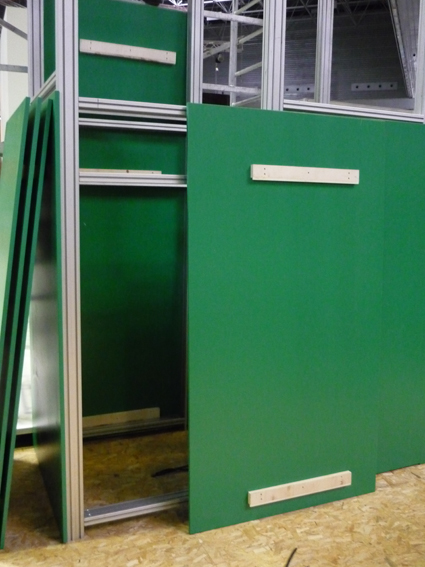The two main obstacles historically cited by event organizers for not opting for a decidedly sustainable option are the increased cost and the lack of attractive alternatives. We are in front of:
a- A real problem
b- A preconceived idea
In today’s text I will focus on the economic issue and I will leave for a future reflection the incidence of aesthetics in the perception of sustainability, but I am sure that at the end we will be able to choose the right answer.
Both the professional event organizer and the communication department of a company with its own exhibition activity must have a long-range sustainability strategy that generates coherent projects in a natural way. The problem arises when each action requires a massive investment in hours of research and search for materials and optimal solutions, taking into account that time scarcity is the indispensable ingredient of any self-respecting project. Having an environmental impact calculation system adapted to the characteristics of the sector, which can be fed with solutions and which guarantees truly valid environmental solutions, saves time and money in the design and conceptualization phases.
Ingenuity and creativity are two wonderful ways to create better events (environmentally, with greater economic return, with better memories among attendees…) but, as in all areas, effective techniques help to turn good ideas into good realities. Structural solutions, those invisible gears that make everything work, admit active reuse methodologies that do not interfere negatively with the final image of the event. The sectors where eco-design is developing the most, EuP (energy-using products) manufacturers, are promoting two lines of action where energy efficiency improvements can be made: cleaner production (less energy consumption in the production phases) and more sustainable use (more operating hours with less energy consumption). The correct application of measures in these two areas allows manufacturers to save on their electricity bills and to make a sales argument to the end consumer. In the ephemeral architecture sector, these two factors are not predominant in the environmental impact, so efficiency must be sought in aspects such as the conscious, controlled and effective reuse of construction elements.
Conscious: Using reused elements hiding their origin is a mistake, it is necessary to give environmental value to their use before the client and before the event attendee.
Controlled: Designing elements based on a real cycle of use ensures that they function correctly over time. On the other hand, collecting loose elements of an event because they have been liked does not usually work if they have not been designed with that objective in mind: they are kept forever waiting for a project in which they fit, they are damaged when disassembled, new supports have to be prepared, they are not transported or stored properly, the format does not fit with the next event…
Effective: The savings in time and money add up to a calculated and real environmental improvement objective.
Conclusion: The correct answer is B. Appropriate reuse techniques integrated in the ecodesign methodology can improve the environmental and economic sustainability of trade fair activities.


